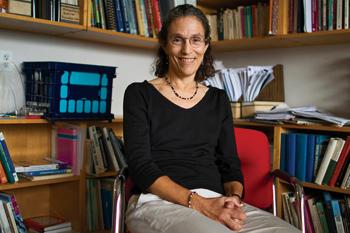Interview by Peter Rooney
In 2008, Professor of Psychology Elizabeth Aries published Race and Class Matters at an Elite College, about 58 white and black students, half of them affluent, half of them lower-income, during their first year at Amherst. Her new book, Speaking of Race and Class: The Student Experience at an Elite College, written with Richard Berman, reconnects with 55 of these students in their senior year.
Aries found that many students re-examined their prejudices while at Amherst. “For example,” she says, “many white students assumed black students were poor. Then they would meet affluent black students. Or white students would meet smart black students who got in here because they merited it. Or blacks would say to me, ‘At my private school I never met a white who was poor. I thought they were all wealthy.’ Not here.”

Here are three excerpts from a long interview with Aries about her project:
On following up with students as seniors: “By the end of their freshman year in 2006,” Aries says, “ a third of the students said they learned something about race; at the end of senior year, that had gone up to just over half. On the one hand you say, ‘That’s great.’ On the other hand you could say, ‘Half of them couldn’t articulate anything they had learned about race?’ Bringing these diverse students here is great, and a certain amount of good things will follow from that. But without more specific programming and practices, there’s a major opportunity lost.”
On students who send money home for gas and groceries: “One student I interviewed was working 20 hours a week to send money to her younger sister. The college doesn’t have the expectation that students have to work those kinds of hours and tries to provide enough aid so students don’t have to. But some choose to.”
On the bounced check that helped spur her interest in the study: “In this department, for an honors thesis, you have to turn in three copies in separate black binders. One of my students mentioned that these binders are really expensive, and I asked how she paid for them. She said, ‘I had to bounce a check at Hastings.’ Those kinds of comments, and an increasing number of incidents, [made me] realize we were assuming that our students had money.”
Photo by Rob Mattson